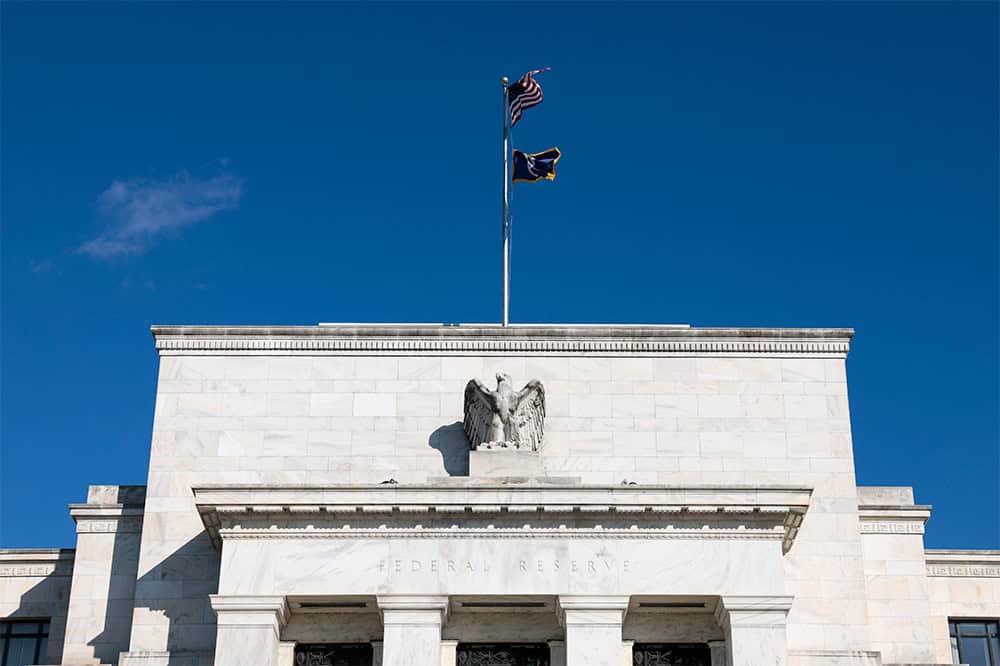What Is R Versus G and Why Does It Matter for the National Debt?
Last Updated April 17, 2025
The national debt is currently around 100 percent of gross domestic product (GDP) and is projected to rise above its its all-time high of 106 percent, which was reached shortly after World War II, in just four years. What is more, interest rates on federal borrowing are higher now than they were just a few years ago. The combination of higher debt levels and elevated interest rates have increased the cost of federal borrowing, which has prompted economists to consider the sustainability of the United States’ current fiscal trajectory.
One approach to assess the sustainability of federal debt was popularized by Olivier Blanchard, in his speech as outgoing American Economic Association president, in 2019. That paper was written during a period of low interest rates and noted the relationship between the interest rate on government debt (R) and the growth rate of the economy (G): R less than G could imply a stable debt trajectory. However, Blanchard, as well as other economists and fiscal policy experts, recognized that the framework only holds true when the deficit excluding interest payments is small, which unfortunately is not the current case in the United States.
What Are R, G, and the Primary Deficit and How Are They Used to Consider Debt Ratios?
Evaluating debt ratios (and debt sustainability) using interest rates and economic growth rates requires understanding three concepts:
- R is the average interest rate on government debt, which measures the cost of borrowing.
- G represents the growth rate of GDP, a measure of the amount of goods and services produced in the economy.
- The primary deficit is the difference between annual revenues and spending, excluding interest costs.
The relationship between those three concepts can be used to determine debt sustainability. If R is greater than G, the money the federal government has to pay for its borrowing outpaces the growth rate of the economy so the debt-to-GDP ratio will rise even if the primary deficit is in balance. Alternatively, if R is less than G, the opposite holds: the debt-to-GDP ratio could decrease over time in conjunction with small primary deficits.
The United States’ Primary Deficit, R, and G
The framework of the relationship between R and G shows that the United States’ debt is unsustainable because the country has built in large primary deficits as a result of the structural mismatch between revenues and outlays. Such deficits are driven by an aging population and rising healthcare costs, accompanied by revenues that are insufficient to meet promises that have been made.
In recent history, the United States has benefited from an R that was generally below G. Over the past 30 years, average R (measured using the nominal interest rate on 10-year Treasury notes) was lower than average G (measured using nominal GDP growth); however, over a similar time horizon in the future, on average, R is projected to be slightly higher than G.
According to projections from the Congressional Budget Office (CBO), R and G will be relatively similar over the next 15 years, but interest rates (as measured by the 10-year rate on Treasury notes) will eventually outstrip economic growth. In addition, CBO projects primary deficits to widen, which would lead to a rapidly rising debt-to-GDP ratio.
The increasing debt-to-GDP ratio also influences R and G in ways that can exacerbate the projected difference between the two variables. High debt levels not only increase R as federal borrowing competes for funds in capital markets but also lower G by reducing long-term investments that create economic growth.
Conclusion
Assessing the relationship among R, G and the primary deficit can be a helpful way to look at the U.S. fiscal outlook. The nation maintained low interest rates from 2009 to 2022, thereby allowing interest rates to remain relatively below the rate of economic growth. However, interest rates are projected to remain around today’s higher level, which would cause the debt-to-GDP ratio to rapidly expand in the near future. To improve the nation’s fiscal trajectory, policymakers must focus on reducing primary deficits to put debt on a more sustainable path.
Image credit: Photo by Spencer Platt/Getty Images
Further Reading
High Interest Rates Left Their Mark on the Budget
When rates increase, borrowing costs rise; unfortunately, for the fiscal bottom line, that dynamic has been playing out over the past few years.
Debt vs. Deficits: What’s the Difference?
The words debt and deficit come up frequently in debates about policy decisions. The two concepts are similar, but are often confused.
National Debt Could More than Double the Size of the Economy
GAO’s findings add to a chorus of nonpartisan evidence and analysis showing that action is needed to improve our fiscal outlook.


